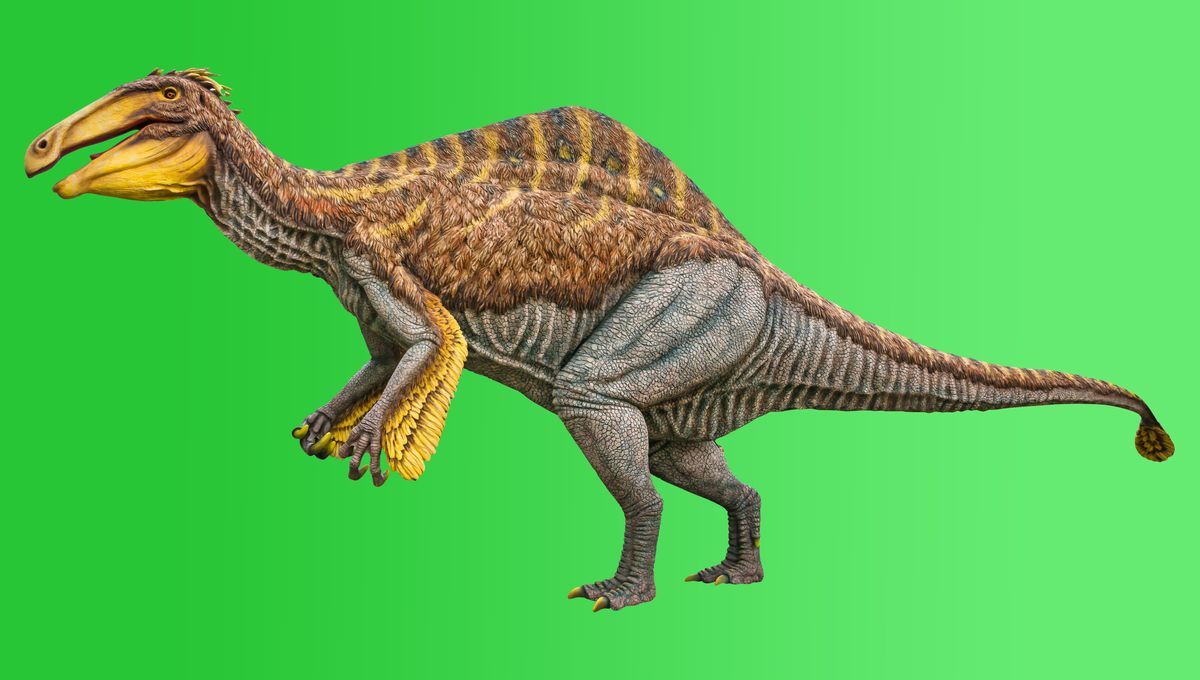
A team of scientists claims to have cracked part of the code in telling male and female non-avian dinosaurs apart. In what may be a rare case of evidence of sexual dimorphism in dinosaurs, they’ve sorted a large collection of leg bones into two categories they think are sexually divided, although they can’t say which is which.
Sexual organs seldom fossilize well, and secondary features like feathers aren’t much better. Consequently, despite giving famous dinosaur fossils gendered names like “Sue”, most of the time we have no idea whether a particular specimen was male or female. Without this knowledge, there are a lot of questions about dino behavior we can’t answer. For example, among those species where there are strong signs of parental care, was this provided purely by the mother, or was the father equally involved?
The answers to questions like this probably vary among species, but a new paper claims to provide answers for ornithomimosaurs, ostrich-like theropod dinosaurs.
A tragedy for the early Cretaceous species became a major opportunity for palaeontologists. A large herd died together in a mass event and got buried in what is now Angeac-Charente, France. Parts of at least 61 members of the herd have been recovered.
Romain Pintore, a PhD student at the Muséum National d’Histoire Naturelle, and co-authors studied the shape of the preserved thigh bones and found they showed differences in curvature that, while existing on a spectrum, could be divided into two distinct categories. The same pattern was seen in the width of the epiphysis (rounded tip) at the bottom of the bones. Surviving relatives of the dinosaurs, including birds and crocodiles, vary enough on these features that they can be used to distinguish males from females with tolerable reliability.
Although these features put the specimens in two distinct categories, the authors can’t tell which are the males and which are the females. Today most birds that show similar differences have wider epiphyses in the males than the females, but in ostriches the opposite is true.
Unexpectedly, the authors found equal numbers of bones of each group in their sample.
That’s in contrast to modern flocking relatives of dinosaurs that may hatch similar numbers of each sex, but have significantly more adult females, as young male survival rates are lower.
Some palaeontologists have identified dinosaurs that appear to have died incubating a clutch of eggs as female, but given the care shown by penguin and emu fathers – to name just two species – that’s a deeply questionable judgment.
Female dinosaurs, like birds, had distinctive medullary bones that helped them lay down material for eggshells. However, it seems this only appeared in preparation for egg-laying and was consumed in the process. Consequently, only a small proportion of female dinosaurs, which died at just the right time, can be identified this way. Perhaps if an ornithomimosaur is found with egg-producing medullary tissue we will know which thigh-bone shape belongs to the females, but so far none have been found.
Size was once a popular means of testing, but most palaeontologists now reject it. Just because males are larger among many species of mammals doesn’t make the pattern universal, as spiders and smaller hummingbirds show.
“Skeletons are often found in different locations and the preserved animals may have lived several thousand or even millions of years apart, making it impossible to tell whether any variations in the skeleton are due to regional, temporal, individual, age-related or sex-related differences,” an accompanying editorial notes. Smaller specimens have been labeled female, only to turn out to be not fully grown.
The study is published open access in eLife.
Source Link: The Secret To Learning A Dinosaur’s Sex Is All In The Leg Bones